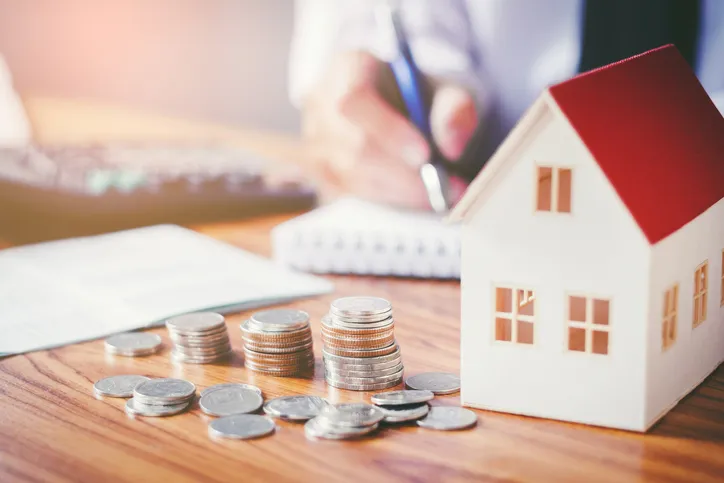What Is a Brownfield Site?
A brownfield site, or brownfield land, refers to previously developed land that is no longer in use. These areas often sit derelict, and in some cases, they may be contaminated due to past industrial or commercial activities. While this can make redevelopment more complex, brownfield sites also present significant opportunities for regeneration and sustainable housing solutions.
Building on Brownfield Sites – Advantages and Disadvantages
Below are some of the advantages and disadvantages of brownfield redevelopment.
Advantages
- Brownfield sites can often be cheaper to develop since they typically have existing infrastructure, such as roads, drainage, and utilities. This can significantly reduce initial development costs compared to building on undeveloped land
- Planning permission is often easier to obtain for brownfield sites, as local authorities are generally more supportive of repurposing disused land rather than allowing urban sprawl into greenbelt areas
- Brownfield redevelopment is a more sustainable approach to development, as it repurposes existing land rather than building on untouched countryside. This helps to limit the loss of green spaces and preserve natural habitats
- Most brownfield sites are located within cities, meaning new developments on these plots can support urban regeneration, revitalising neglected areas while reducing the need for further city expansion
Disadvantages
- Redeveloping brownfield sites can be costly, especially if significant remedial work is required to clear contamination or update existing infrastructure
- Space limitations may impact design possibilities. For example, gardens and green spaces may not be factored into planning approvals, as brownfield land was often previously used for industrial or commercial purposes
- There are often restrictions on what can be built, as the land’s historical use may limit the scale and type of development permitted
- Securing a mortgage for a brownfield site can be complicated, as lenders may perceive these developments as higher risk due to environmental concerns and potential long-term liabilities
- Developers need specialist expertise to assess and manage challenges associated with brownfield land, such as soil contamination, foundation instability, or outdated drainage systems
Could Redeveloping Brownfield Sites Be a More Sustainable Option?
For many developers, brownfield sites could be the answer to the UK’s housing crisis. The demand for new homes continues to rise, and there has been increasing pressure on the government to encourage brownfield development as a viable and sustainable solution.
The government has committed £1.8 billion towards developing 160,000 new homes on 15 hectares of currently dormant land. While this is a step in the right direction, many in the industry believe that far more could be done to maximise the potential of brownfield sites.
Estimates from the Ministry of Housing, Communities and Local Government suggest that there are 36,700 hectares of brownfield land across England. This equates to over 51 million square metres, enough space for an estimated 1.3 million homes, far exceeding current government targets.
Research by Sirius calculated that developing all available brownfield land could create £487 billion worth of property across England. This is over eight times the number of homes currently promised by the government, showing the untapped potential of these sites in tackling the housing crisis.
Can You Get a Mortgage on a Brownfield Site?
It is possible to obtain a mortgage for a brownfield site, but many mainstream lenders remain hesitant when assessing this type of development. The key concern is that the condition of the land could negatively impact the long-term value of the property, which affects the lender’s security.
Environmental risks, such as contaminated land, unstable ground conditions, or the cost of remedial work, can make lenders wary. If unforeseen issues arise, the liability may fall on both the borrower and the lender, potentially leading to financial losses.
Lenders also assess the borrower’s ability to manage these risks. If unexpected costs arise such as decontamination work or infrastructure repairs, they will need to know if the borrower can afford to continue, or would they be forced to abandon the project. If the latter happens, lenders could be left with an unsellable asset, reducing its value significantly.
Due to these challenges, most high street lenders will not fund brownfield developments until remedial work has been completed and certified as safe. As a result, many borrowers turn to specialist commercial lenders, who are more flexible and willing to consider these projects. However, the success of an application often depends on the borrower’s experience, financial strength, and the development proposal itself.
Can a Broker Help Me Get a Brownfield Site Mortgage?
If you’re considering a mortgage for a brownfield development, working with a specialist mortgage broker like John Charcol is highly recommended. Unlike standard residential mortgages, brownfield site financing requires expertise, industry connections, and access to lenders who understand complex developments.
A broker like John Charcol can help you navigate this process by identifying lenders that are comfortable with brownfield developments. They will assess your financial position, present your case in the strongest possible way and work with the lender to ensure a smooth application process.
Experienced brokers also have access to lenders who specialise in complex developments and are willing to take on the risks associated with brownfield sites. By leveraging their relationships with these lenders, a broker can help structure a deal that suits your needs and increases your chances of securing finance.
So, Are Brownfields the Greenest Option?
With the growing demand for affordable and accessible housing, attention is turning to underutilised spaces that could provide much-needed homes. Brownfield development offers a way to increase housing supply without encroaching on greenbelt land, making it one of the most sustainable solutions for urban expansion.
However, while the government has recognised the potential of brownfield sites in meeting housing targets, current efforts remain limited. With the potential to build far more homes than currently planned, there is a need for greater government support to incentivise developers.
This could include faster planning approvals, financial grants, tax incentives, and clearer environmental regulations to make brownfield redevelopment more financially viable. Lenders, too, need to adapt their approach by developing more flexible financing options to encourage sustainable housing growth on these sites.
The opportunities are there, but unlocking the full potential of brownfield land requires collaboration between developers, lenders, local councils, and the government. If done correctly, brownfield redevelopment could play a key role in shaping the future of UK housing while preserving valuable green spaces for future generations.
Brownfield Site Mortgages Conclusion
Brownfield sites present both challenges and opportunities, but with the right approach, they can provide sustainable, high-quality housing while reducing urban sprawl.
If you’re considering purchasing or developing a property on a brownfield site, securing the right mortgage is crucial. A specialist broker, like John Charcol, can help you navigate the process, find the right lender, and secure financing that suits your needs.
For expert guidance on brownfield site mortgages, give us a call on ###Telnum### or enquire online today.


